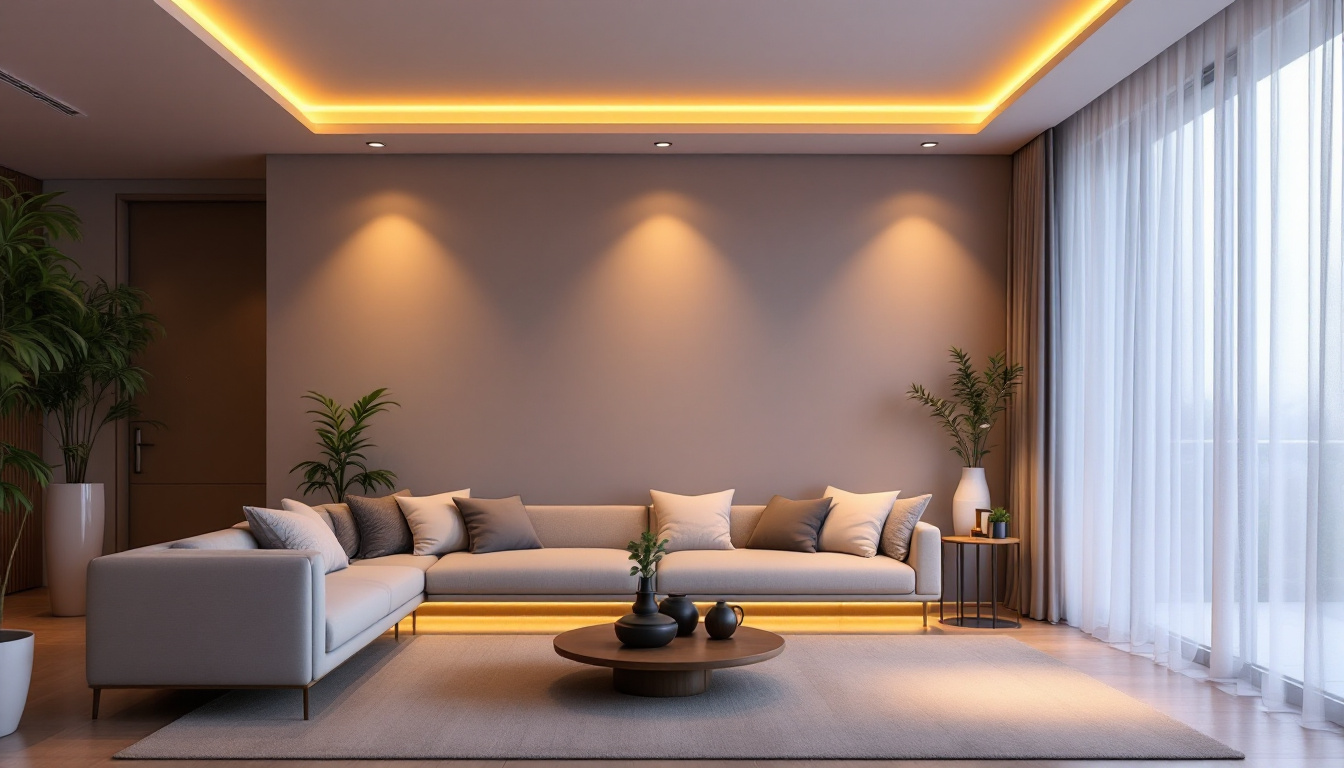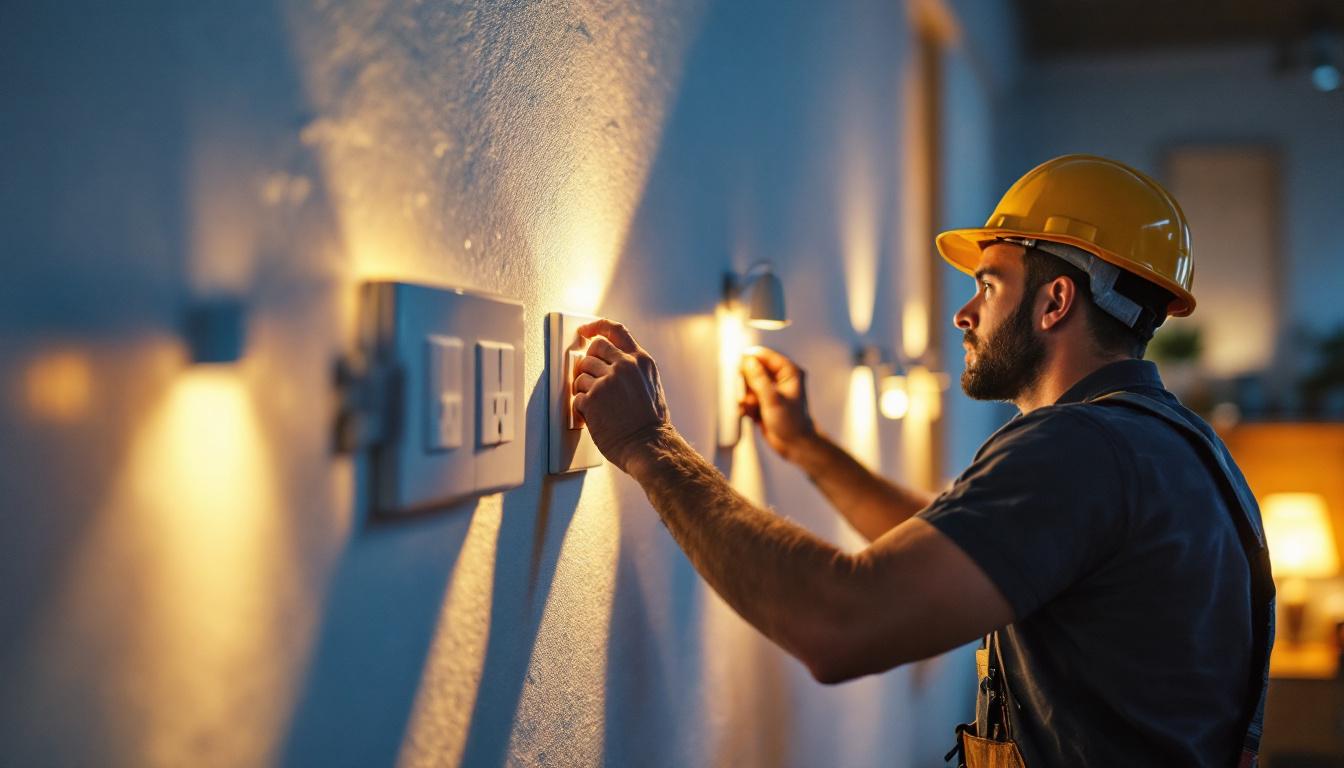
In the world of modern lighting solutions, recessed lighting fixtures have emerged as a popular choice among homeowners and contractors alike. With the integration of LED technology, these fixtures have become even more appealing due to their energy efficiency and versatility. This article delves into the benefits, installation considerations, and design possibilities associated with recessed LED lighting, making it essential reading for lighting contractors looking to enhance their offerings.
Recessed lighting, often referred to as can lighting or pot lighting, involves fixtures that are installed into the ceiling, creating a streamlined and unobtrusive look. This type of lighting is particularly effective in providing ambient illumination, accent lighting, or task lighting, depending on the design and placement of the fixtures. The versatility of recessed lighting allows it to be used in various settings, from residential homes to commercial spaces, enhancing both functionality and aesthetics.
Recessed lighting fixtures consist of three primary components: the housing, trim, and bulb. The housing is the part that is installed into the ceiling, while the trim is the visible part that can be customized in various styles and finishes. The bulb, which in this case is typically an LED, is responsible for providing the light output. When selecting recessed lighting, it’s essential to consider the ceiling height and the desired brightness, as these factors will influence the type of housing and bulb needed for optimal performance.
One of the significant advantages of recessed lighting is its ability to blend seamlessly into the ceiling, making it an excellent choice for spaces with low ceilings or where a clean aesthetic is desired. By strategically placing these fixtures, contractors can create a well-lit environment without the clutter of traditional light fixtures. Moreover, recessed lighting can be used to highlight architectural features, artwork, or specific areas within a room, adding depth and visual interest to the overall design.
LEDs, or light-emitting diodes, have revolutionized the lighting industry with their numerous advantages over traditional incandescent and fluorescent bulbs. One of the most significant benefits is energy efficiency. LED recessed lighting fixtures consume significantly less energy, translating to lower electricity bills for homeowners. This energy efficiency not only benefits the wallet but also contributes to a more sustainable environment, as reduced energy consumption leads to lower carbon emissions.
Additionally, LEDs have a longer lifespan, often lasting up to 25 times longer than incandescent bulbs. This longevity means less frequent replacements, which is a selling point that contractors can highlight to clients. Furthermore, LEDs emit less heat, making them safer and more comfortable to use in various settings. The ability to choose from a wide range of color temperatures also allows homeowners to create the perfect ambiance, whether they prefer a warm, cozy glow or a bright, daylight-like illumination. As technology continues to advance, smart LED options are becoming increasingly popular, enabling users to control their lighting remotely, adjust brightness levels, and even set schedules for added convenience and energy savings.
Installing recessed LED lighting fixtures requires careful planning and execution. Contractors must consider various factors, including ceiling height, fixture placement, and electrical requirements. Proper installation ensures optimal performance and client satisfaction.
When planning the installation of recessed lighting, ceiling height plays a crucial role in determining the type and number of fixtures needed. For lower ceilings, it’s advisable to use fixtures with a lower profile to avoid overwhelming the space. In contrast, higher ceilings may allow for more extensive lighting designs, including multiple fixtures or larger diameters.
Fixture placement is equally important. A general rule of thumb is to space recessed lights about 4 to 6 feet apart, depending on the desired light intensity and the size of the room. This spacing helps achieve an even distribution of light, reducing shadows and dark spots.
Before installation, contractors must assess the electrical requirements for the recessed lighting fixtures. This includes ensuring that the existing wiring can support the new fixtures and determining the appropriate circuit load. It’s essential to adhere to local building codes and regulations to ensure safety and compliance.
Additionally, using dimmer switches with LED fixtures can enhance energy efficiency and provide clients with customizable lighting options. However, it’s vital to choose compatible dimmers designed specifically for LED technology to prevent flickering or performance issues.
Recessed lighting offers a wide range of design possibilities, making it a versatile choice for various applications. Whether in residential or commercial settings, these fixtures can be tailored to meet the specific needs and aesthetic preferences of clients.
One of the most effective uses of recessed lighting is for accent lighting. By strategically placing fixtures to highlight artwork, architectural features, or decorative elements, contractors can create a focal point in any room. This technique not only enhances the visual appeal but also adds depth and dimension to the space.
When using recessed lights for accent lighting, it’s essential to consider the beam angle and intensity of the light. Narrow beam angles are ideal for highlighting specific objects, while wider angles can provide a more general wash of light. Selecting the right trim style can also influence the quality of light and the overall effect.
In areas where specific tasks are performed, such as kitchens, home offices, or workshops, recessed lighting can serve as effective task lighting. By installing fixtures directly above work surfaces, contractors can ensure that these areas are well-lit and functional.
For optimal task lighting, it’s crucial to consider the color temperature of the LED bulbs. Cooler temperatures (around 4000K to 5000K) are often preferred for workspaces, as they mimic daylight and enhance focus. In contrast, warmer temperatures (2700K to 3000K) may be more suitable for living areas, creating a cozy atmosphere.
Recessed lighting is also an excellent choice for ambient lighting, providing a soft, even glow throughout a space. This type of lighting is ideal for living rooms, bedrooms, and hallways, where a warm and inviting atmosphere is desired.
To achieve effective ambient lighting, contractors should consider the overall layout of the room and the placement of fixtures. A combination of recessed lighting with other light sources, such as floor lamps or wall sconces, can create a layered lighting effect that enhances the overall ambiance.
As energy efficiency becomes increasingly important in today’s world, recessed LED lighting fixtures stand out as a sustainable choice. Their low energy consumption and long lifespan contribute to reduced carbon footprints and lower energy bills for homeowners.
By switching to LED recessed lighting, homeowners can significantly reduce their energy consumption. Unlike traditional bulbs, which waste a considerable amount of energy as heat, LEDs convert a higher percentage of energy into light. This efficiency not only benefits the environment but also aligns with the growing demand for sustainable living solutions.
Contractors can play a pivotal role in promoting energy-efficient lighting options to their clients. By highlighting the long-term cost savings associated with LED fixtures, they can encourage homeowners to make the switch, ultimately leading to a more sustainable future.
Many regions offer incentives and rebates for homeowners who choose energy-efficient lighting solutions. Contractors should stay informed about local programs that encourage the adoption of LED technology. By sharing this information with clients, contractors can enhance their value proposition and help homeowners save money while making environmentally conscious choices.
Additionally, educating clients about the benefits of energy-efficient lighting can foster long-term relationships and establish contractors as trusted experts in the field.
While recessed LED lighting fixtures offer numerous benefits, there are also challenges that contractors must navigate. Understanding these challenges can help ensure successful installations and satisfied clients.
One of the primary challenges associated with recessed LED lighting is the initial cost. Although the long-term savings on energy bills can offset this expense, some clients may be hesitant to invest in LED technology upfront. Contractors should be prepared to discuss the return on investment and the long-term benefits of choosing energy-efficient options.
Providing clients with a detailed cost analysis can help alleviate concerns and demonstrate the value of investing in high-quality recessed lighting fixtures.
Another challenge to consider is compatibility with existing fixtures and systems. Not all LED bulbs are compatible with every dimmer switch or lighting control system, which can lead to performance issues. Contractors must ensure that the chosen fixtures and controls work seamlessly together to avoid complications during installation.
Staying updated on the latest advancements in LED technology and compatible products can help contractors provide the best solutions for their clients.
Recessed lighting fixtures with LED technology represent a significant advancement in energy-efficient lighting solutions. Their versatility, energy savings, and aesthetic appeal make them a must-know option for lighting contractors. By understanding the benefits, installation considerations, design possibilities, and challenges associated with recessed LED lighting, contractors can better serve their clients and enhance their offerings.
As the demand for sustainable and energy-efficient solutions continues to grow, staying informed about the latest trends and technologies in recessed lighting will position contractors as leaders in the industry. Embracing the shift towards LED lighting not only benefits clients but also contributes to a more sustainable future for all.
Ready to elevate your lighting game with the latest in recessed LED fixtures? Look no further than LumenWholesale, where we specialize in providing contractors with the highest quality, spec-grade lighting products at prices that can’t be beaten. Say goodbye to local distributor markups and hello to our unbeatable wholesale rates. With our expansive selection that meets rigorous industry standards, you can trust that your lighting installations will shine with reliability and performance. Plus, with free shipping on bulk orders, you can stock up on premium lighting solutions without worrying about hidden fees. Don’t compromise on quality or value—choose LumenWholesale for the perfect blend of affordability and convenience. Wholesale Lighting at the Best Value is just a click away.

Discover how suspended linear LED lighting is revolutionizing the industry and giving lighting contractors a competitive edge.

Discover how different wall outlets can boost your lighting contractor business.

Discover the secrets to mastering outlet electric installations with expert insights tailored for lighting contractors.

Discover how outdoor wire nuts can transform your lighting projects by ensuring safety and durability.